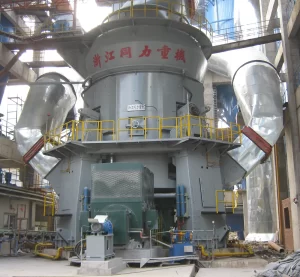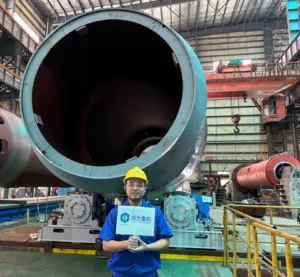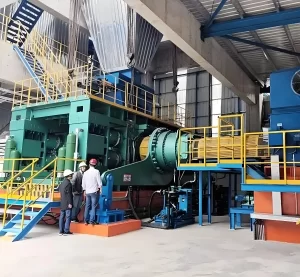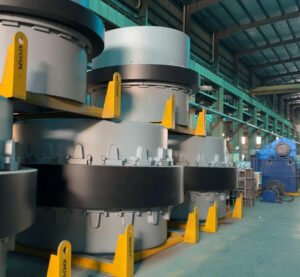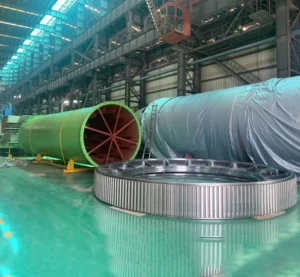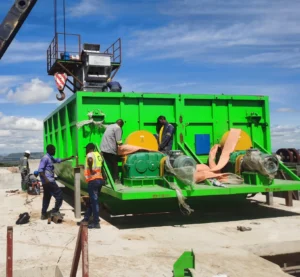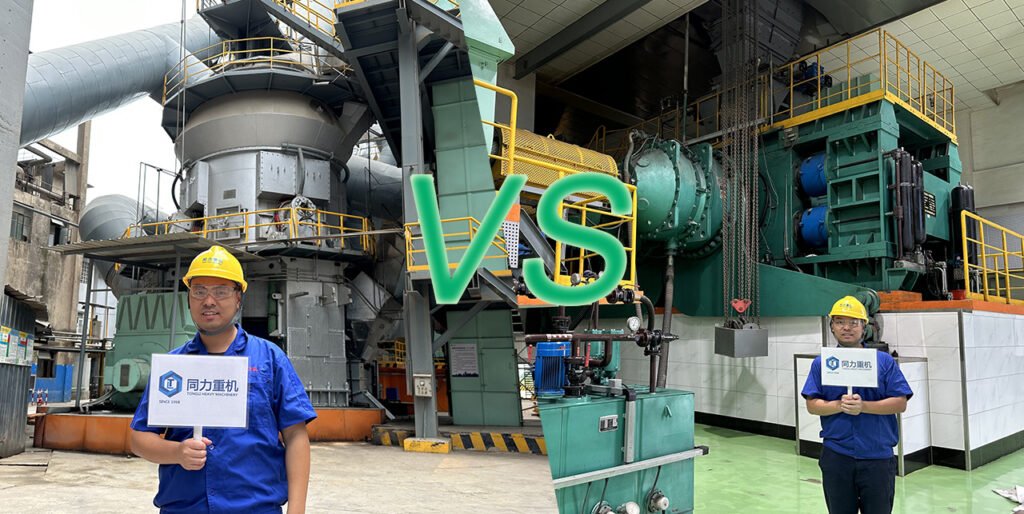
Cement is a high-energy-consuming industry that consumes a lot of energy during the production process. As the country's requirements for energy conservation and emission reduction become increasingly stringent, cement grinding systems will be an important part of implementing energy conservation and consumption reduction. At present, there are two main types of cement grinding systems in China. One is the roller press semi-final grinding system, with a power consumption of 25~28kWh/t. The other is an intelligent, customized, high-efficiency and energy-saving vertical roller mill grinding system with a power consumption of 20~25kWh/t. This article conducts a multi-dimensional benchmarking analysis of the grinding system composed of roller press + ball mill and the vertical mill final grinding system through process flow, installed capacity, power consumption, investment, operation and maintenance costs, etc., focusing on the many advantages of cement vertical mill final grinding and vigorously promoting it.
Comparison of process flow between vertical mill grinding system and roller press grinding system
Conclusion: The vertical mill system has a simple process flow, fewer equipment and fewer fault points. The process flow of the semi-final grinding system consisting of a roller press + high-efficiency powder selector + ball mill is too complicated.
Vertical mill system process flow comments:
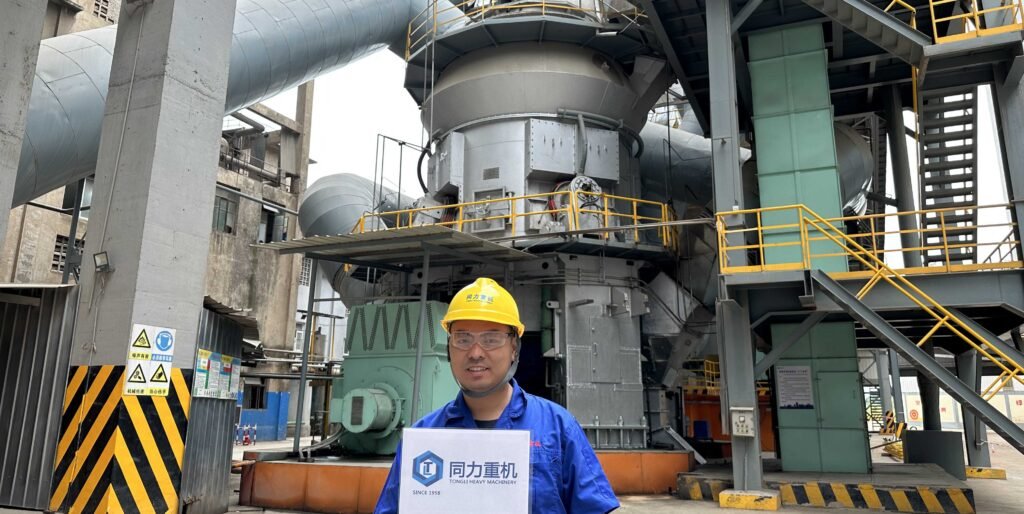
The vertical mill system has a simple process flow, few equipment, few failure points, low energy consumption, superior product performance, high production efficiency, low maintenance, compact layout, small building area, and covers an area of about 77.4% of the ball mill system. The building space is about 64.3% of the ball mill system and can be arranged outdoors, which directly reduces the investment cost of the enterprise. In addition, the vertical mill itself has a separator, and there is no need to add a powder selector and lifting equipment.
Roller press grinding system process flow comments:
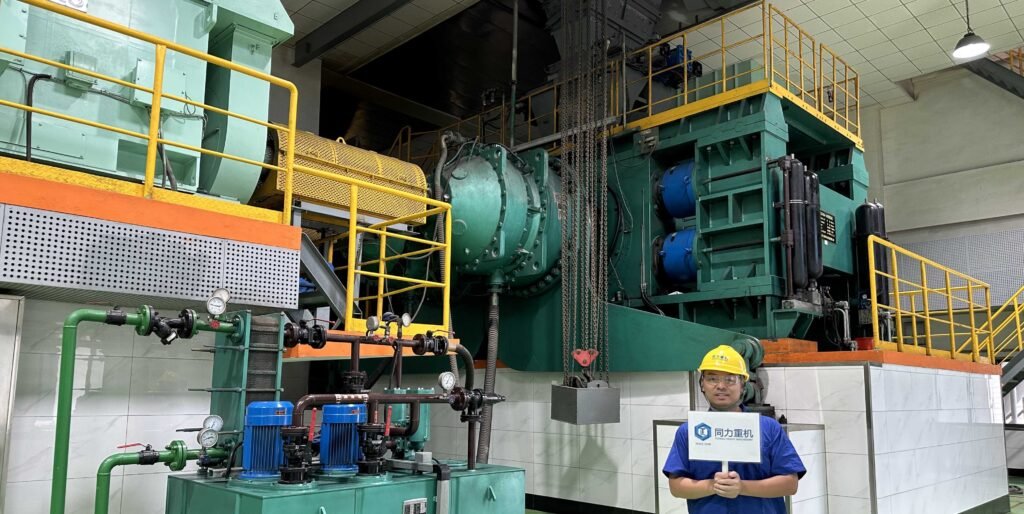
The semi-final grinding system composed of roller press + high-efficiency powder selector + ball mill is a widely promoted grinding process. However, the process flow is too complicated, the power consumption is medium to high, the maintenance is large, and the system investment is large.
Comparison of system installed power and energy consumption:
Remark: This benchmarking uses two processes with high market recognition, the cement vertical mill final grinding system and the roller press semi-final grinding system, for comparison. Cement type: PO42.5, material ratio clinker: gypsum: fly ash = 80:5:15, product fineness is 3500±100cm²/g. After calculation, the comprehensive Bond work index of this ratio is 13.9. Energy consumption test boundary of cement manufacturing system: GB33652 "Technical Regulations for Energy Consumption Test of Cement Manufacturing" from the cement raw materials out of the cement blending warehouse to the cement into the cement warehouse.
- The cement vertical roller mill final grinding system adopts cold grinding operation, the vertical roller mill model is ZJTL-5640, and the designed mill outlet concentration is 400g/m³. The system output is 250t/h, and the energy consumption is 23.94kWh/tce.(Table1)
- The roller press semi-final grinding system adopts double closed-loop circulation, the roller press model is TL1816, the ball mill model is φ3.8×14.5m, the fineness of the material entering the mill is 2061cm²/g, the system output is 250t/h, and the energy consumption is 26.93kWh/tce.(Table2)
Vertical roller mill final grinding system equioment specification:
| No. | Equipment Name | Model / Specifications / Parameters |
| 1 | Cement Vertical Mill | Model: ZJTL5630 |
| Capacity: 250 t/h | ||
| Product Fineness: 3500±100 cm²/g | ||
| Motor Power: 5000 kW | ||
| 2 | Main Bag Filter | Air Volume: 625,000 m³/h |
| 3 | Main Exhaust Fan | Air Volume: 650,000m³/h |
| Pressure: -7200Pa |
Vertical roller mill final grinding system equipment specification:
| No. | Equipment Name | Model / Specification / Parameter | Value | Unit |
| 1 | V-Type Separator | Model | VRP-1200 | — |
| Capacity | 1200 | t/h | ||
| Air Volume | 266,500 | m³/h | ||
| 2 | Roller Press | Model | TL180-160 | — |
| System Capacity | 250 | t/h | ||
| Throughput | 1000–1200 | t/h | ||
| Product Fineness | 3500±100 | cm²/g | ||
| 3 | High-Efficiency Separator | Model | D-4500 | — |
| System Air Volume | 270,000 | m³/h | ||
| 4 | Circulating Fan | Air Volume | 302,000 | m³/h |
| Pressure | -7337 | Pa | ||
| 5 | Ball Mill | Model | Φ3.8×14.5 | — |
| Capacity | 250 | t/h | ||
| Power | 3150 | kW | ||
| 6 | O-Sepa Separator | Model | N-4500 | — |
| Max Feeding Capacity | 810 | t/h | ||
| Air Volume | 270,000 | m³/h | ||
| 7 | Main Bag Filter | Air Volume | 334,000 | m³/h |
| 8 | Main Exhaust Fan | Air Volume | 334,000 | m³/h |
| Pressure | -5509 | Pa | ||
| 9 | Mill Tail Dust Collector | Air Volume | 36,860 | m³/h |
| 10 | Mill Tail Exhaust Fan | Air Volume | 58,300 | m³/h |
| Pressure | -4813 | Pa |
Weight Comparison Table of VRM Grinding and Roller Press System:
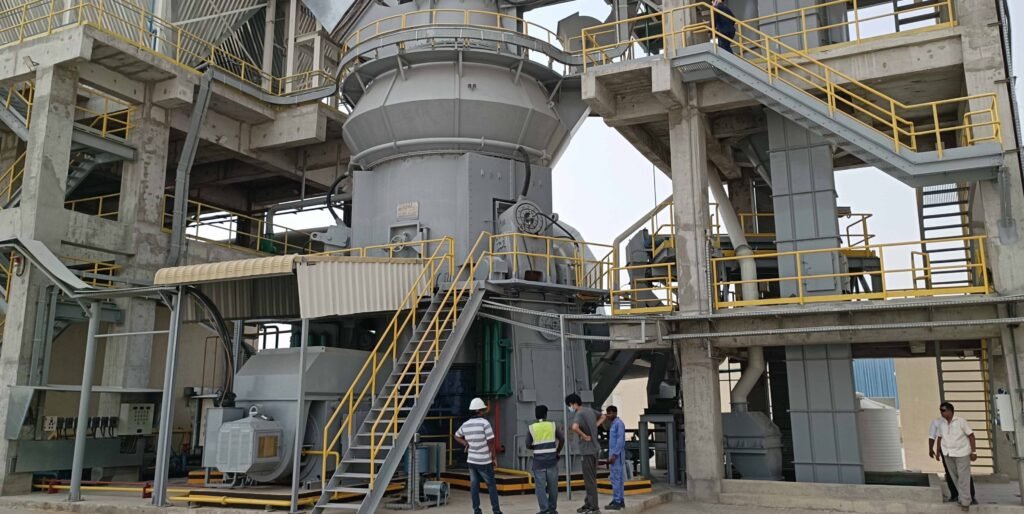
It can be concluded from the below table that the equipment weight of the vertical roller mill grinding system is equivalent to 86.4% of the weight of the roller press semi-final grinding cement system.
| Category | Serial No. | Equipment Name | Cement Vertical Mill Grinding System Weight | Roller Press Grinding System Parameter |
| Main Machine Weight | 1 | Cement Vertical Mill/V - Type Separator | 808000 kg | 22450 kg |
| 2 | Main Bag Dust Collector/Roller Press | 270540 kg | 315600 kg | |
| 3 | Main Exhaust Fan/High - Efficiency Separator | 60760 kg | 69350 kg | |
| 4 | - /Circulating Fan | - | 15500 kg | |
| 5 | - /Ball Mill | - | 324000 kg | |
| 6 | - /Grinding Media | - | 215750 kg | |
| 7 | - /O - Sepa | - | 69350 kg | |
| 8 | - /Main Dust Collector | - | 105100 kg | |
| 9 | - /Main Exhaust Fan | - | 16360 kg | |
| 10 | - /Mill Tail Dust Collector | - | 16520 kg | |
| 11 | - /Mill Tail Exhaust Fan | - | 2770 kg | |
| Total | - | 1139300 kg | 1172750 kg | |
| System Weight | - | Main Machine Weight | 1139 t | 1173 t |
| - | Auxiliary Machine Weight | 76 t | 181 t | |
| - | Non - standard Equipment Weight | 5.6 t | 28 t | |
| - | Non - standard Weight | 117 t | 166 t | |
| Total | - | 1338 t | 1548 t |
Installed Equipment Power Comparison Table of 2 Systems:
We can tell from the table below that the installed power of the vertical roller mill grinding system is only 85.9% of the installed power of the roller press semi-final grinding cement system, therefore saving energy.
| Serial No. | Equipment Name | Verical roller mill grinding system | Roller Press Grinding system |
| 1 | Cement Vertical Roller Mill | 5000 kW | - |
| 2 | Main Exhaust Fan | 2500 kW | - |
| 1 | Roller Press | - | 3200 kW |
| 2 | High - Efficiency Separator | - | 215 kW |
| 3 | Circulating Fan | - | 1000 kW |
| 4 | Ball Mill | - | 3150 kW |
| 5 | O - Sepa | - | 270 kW |
| 6 | Main Exhaust Fan | - | 900 kW |
| 7 | Mill Tail Exhaust Fan | - | 160 kW |
| Total | - | 7500 kW | 8895 kW |
System Installed Power Table:
| Item | Cement Vertical Mill Final Grinding System | Roller Press Semi - final Grinding System | Unit |
| Main Machine Power | 7500 kW | 8895 kW | kW |
| Auxiliary Machine Power | 652 kW | 585 kW | kW |
| Total Power | 8152 kW | 9480 kW | kW |
| Unit Installed Power | 32.6 kWh/t | 37.9 kWh/t | kWh/t |
Power consumption per unit of vertical mill grinding system and roller press grinding
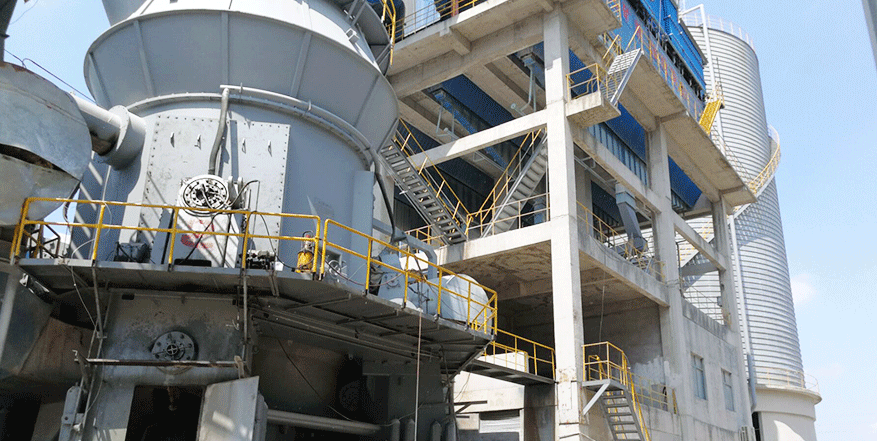
What is the power consumption of vertical roller mill grinding system?
In the calculation of power consumption of cement vertical mill final grinding system, in the cement batching station (unloading) link, from the batching station metering equipment to the mill belt, the total power consumption is 0.341kWh/tce; in the cement grinding system, the power consumption of the vertical mill body including the powder selector is 17.951kWh/tce, the power consumption of the vertical mill return belt and the circulation elevator is 0.168kWh/tce, the power consumption of the circulation fan is 5.04kWh/tce, the power consumption of the chute fan and the dust collection fan is 0.036kWh/tce, and the total power consumption of this link is 23.249kWh/tce; in the cement silo (loading), the power consumption of the silo elevator, the silo top exhaust fan, and the silo top silo fan is 0.365kWh/tce. Comprehensively considering all links, the total power consumption of the cement vertical mill final grinding system is 23.96kWh/t.
What is the power consumption of HPGR grinding system?
In the calculation of power consumption of roller press semi-final grinding system, the roller press operating power consumption is 10.17kWh/tce; the upper bucket elevator operating power consumption is 0.13kWh/tce, and the roller press elevator operating power consumption is 0.34kWh/tce; the dynamic powder selector operating power consumption is 0.52kWh/tce, and the circulating fan operating power consumption is 0.19kWh/tce; the ball mill operating power consumption is 11.64kWh/tce; the mill tail exhaust fan operating power consumption is 0.11kWh/tce, and the mill tail elevator operating power consumption is 0.27kWh/tce; the O-Sepa powder selector operating power consumption is 0.59kWh/tce, and its exhaust fan operating power consumption is 2.27kWh/tce. The total power consumption of the grinding system is 26.23kWh/t. In addition, the power consumption of the batching station and the cement silo loading is consistent with the vertical mill system, which are 0.341kWh/tce and 0.365kWh/tce respectively. Taking all parts into consideration, the total power consumption of the roller press semi-final grinding system is 26.94kWh/t.
Power consumption comparison table:
| Power Consumption Comparison Results | Vertical Mill Final Grinding | Roller Press Semi - final Grinding |
| System Output, t/h | 250 | 250 |
| Cement Type | PO42.5 | PO42.5 |
| Clinker : Gypsum : Fly Ash | 80 : 5 : 15 | 80 : 5 : 15 |
| Specific Surface Area, cm²/g | 3500±100 | 3500±100 |
| Bond Work Index | 13.9 | 13.9 |
| Power Consumption, kWh/t | 23.96 | 26.94 |
Conclusion:
So in terms of power consumption, based on the comparison table above we can conclude 3 things:
- The cement vertical mill final grinding system has fewer process equipment and lighter weight (vertical mill system 1338t, roller press system 1548t), and the equipment weight is about 13.6% lighter than the roller press semi-final grinding system;
- The cement vertical mill final grinding system has a smaller installed power (vertical mill system 8152kW, roller press system 9480kW), which is about 14.1% less than the roller press semi-final grinding system
- The cement vertical mill final grinding system has better unit power consumption (vertical mill system 23.96kWh/t, roller press system 26.9kWh/t), which is about 11% less than the roller press semi-final grinding system.
Investment Comparison: Vertical Mill Grinding Plant and Roller Press Grinding Station Which one I should Invest?
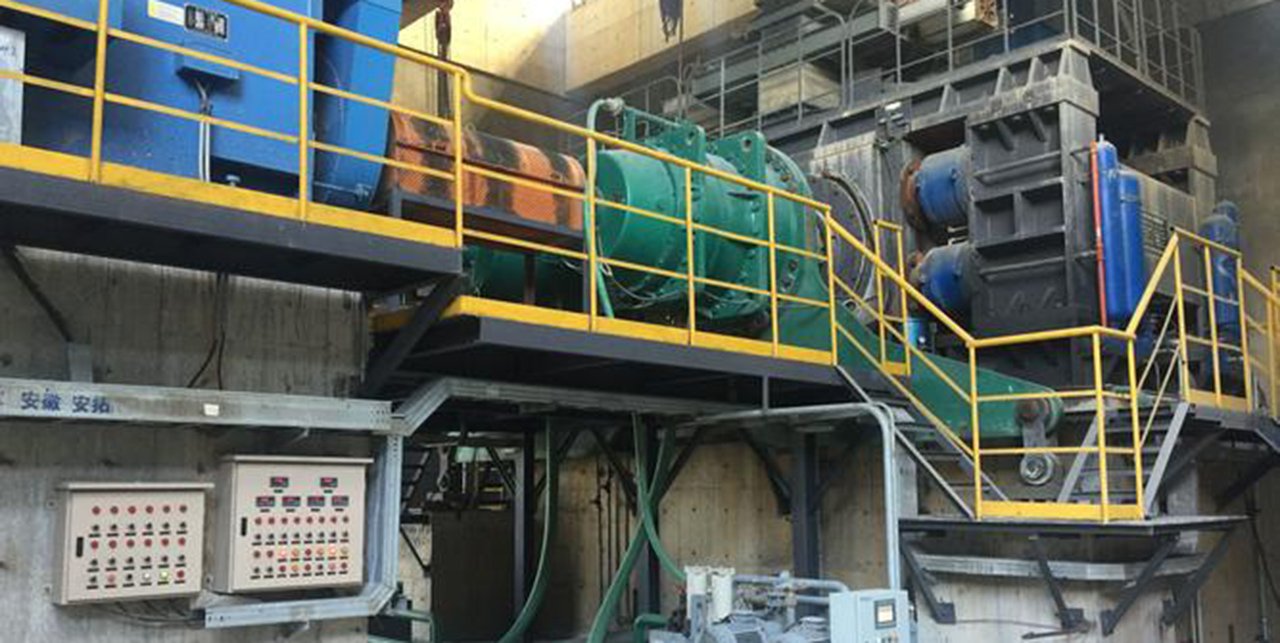
So First of all let us compare the floor area of these two plant: Remark: This benchmark is a 250t/h cement grinding system (cement vertical mill final grinding system and roller press semi-final grinding system) under the same conditions.
Floor area, building area comparison:
- VRM Floor area: The vertical mill system plant size is 19.5×66.5m, covering an area of about 1296m²; the roller press semi-final grinding system plant size is 24×69.8m (circulation fan and mill tail exhaust fan are arranged outside the frame), covering an area of about 1675m². The floor area of the cement vertical mill final grinding system accounts for about 77.4% of the roller press semi-final grinding system.
- HPGR Building area: The vertical mill system dust collector frame is 12.84×32.8m with three floors and a building area of about 1263m²; the roller press semi-final grinding system frame is 15×65.5m, about two and a half floors, with a building area of about 1965m². The floor area of the cement vertical mill final grinding system accounts for about 64.3% of the roller press semi-final grinding system.
Equipment Price Vertical roller mill system:
The investment in cement vertical mill final grinding equipment includes cement vertical mill, main bag dust collector, main exhaust fan and other auxiliary equipment, which is converted to a total of 4.40075 million US dollars; the investment in roller press semi-final grinding equipment includes V-type powder selector and roller press, high-efficiency powder selector, circulating fan and other equipment, which is converted to a total of 5.34615 million US dollars. By comparison, it can be seen that the investment in cement vertical mill final grinding equipment is lower, about 82.3% of the roller press semi-final grinding system.
Cement Vertical Mill Final Grinding System Investment cost:
| No. | Equipment Name | Amount (CNY 10K) | Amount (USD) |
| 1 | Cement Vertical Mill | 2350 | $329,000 |
| 2 | Main Bag Filter | 380 | $53,200 |
| 3 | Main Exhaust Fan | 82 | $11,480 |
| 4 | Other Auxiliary Equipment | 223 | $31,220 |
| Total | 3035k RMB | $424,900 US dollar |
Roller Press Semi-Finish Grinding System Investment cost:
| No. | Equipment Name | Amount (CNY 10K) | Amount (USD) |
| 1 | V-Type Separator | 1100 | $154,000 |
| 2 | Roller Press | 1100 | $154,000 |
| 3 | High-Efficiency Separator | 76.5 | $10,710 |
| 4 | Circulating Fan | 138 | $19,320 |
| 5 | Ball Mill | 920 | $128,800 |
| 6 | Grinding Media | 129 | $18,060 |
| 7 | O-Sepa Separator | 150 | $21,000 |
| 8 | Main Dust Collector | 185 | $25,900 |
| 9 | Main Exhaust Fan | 74 | $10,360 |
| 10 | Mill Tail Dust Collector | 21 | $2,940 |
| 11 | Mill Tail Exhaust Fan | 15 | $2,100 |
| 12 | Other Auxiliary Equipment | 879 | $123,060 |
| Total | 3687 | 3687k RMB | $516,250 US dollar |
Installation cost comparison table for Verical roller mill system and roller press system:
For Mechanical Equipment Installation, the Cement Vertical Mill Final Grinding System has a material cost of 124,000 USD and a construction cost of 562,000 USD, while the Roller Press Semi - final Grinding System has a material cost of 177,500 USD and a construction cost of 630,300 USD.
For Electrical and Automation Equipment Installation, both systems have a material cost of 12,200 USD, with the Cement Vertical Mill Final Grinding System having a construction cost of 174,100 USD and the Roller Press Semi - final Grinding System having a construction cost of 194,600 USD.
For Thermal Insulation and Wear - resistant Engineering Installation, both systems have a material cost of 31,400 USD and a construction cost of 20,800 USD. After sub - totaling, the Cement Vertical Mill Final Grinding System has a sub - total material cost of 167,600 USD and a sub - total construction cost of 756,900 USD, while the Roller Press Semi - final Grinding System has a sub - total material cost of 221,100 USD and a sub - total construction cost of 845,700 USD. In total, the installation project cost of the Cement Vertical Mill Final Grinding System is 924,500 USD, and that of the Roller Press Semi - final Grinding System is 1,066,800 USD, with the exchange rate being 10,000 RMB = 1,450 USD (actual rates may vary, and the converted amounts are for comparative reference of the two systems' installation costs).
| No. | Classification Item Name | Cement Vertical Mill Final Grinding System (Total Price: USD) | Roller Press Semi - final Grinding System (Total Price: USD) | ||
| Material Cost | Construction Cost | Material Cost | Construction Cost | ||
| 1 | Mechanical Equipment Installation | 12.40 | 56.21 | 17.75 | 63.03 |
| 2 | Electrical and Automation Equipment Installation | 1.22 | 17.41 | 1.22 | 19.46 |
| 3 | Thermal Insulation and Wear - Resistant Engineering Installation | 3.14 | 2.09 | 3.14 | 2.09 |
| Sub - total: | 16.76 | 75.71 | 22.11 | 84.58 | |
| Total: | 92.47 | 106.69 |
Construction Investment:
In terms of construction engineering investment, the total price of the cement vertical mill final grinding system is 829,444 USD, and that of the roller press semi - final grinding system is 1,057,307 USD. It can be seen from this that the construction engineering investment of the cement vertical mill final grinding system is lower, accounting for approximately 78.4% of that of the roller press semi - final grinding system.
Now let us compare the total Investment:
By comparing the equipment investment, installation project, and construction project of the cement vertical mill final grinding system and the roller press semi-final grinding system, it can be seen that the system investment of the cement vertical mill final grinding system is better than that of the roller press semi-final grinding system.
The equipment investment of the cement vertical mill final grinding system is about 89.9% of the roller press semi-final grinding system; the installation project is about 86.7% of the roller press semi-final grinding system installation project. The construction project investment is about 78.5% of the roller press semi-final grinding system; the total investment of the cement vertical mill final grinding system is about 88.3% of the roller press semi-final grinding system.
Total Invesement table:
| No. | Item | Equipment Cost | Electrical Automation | Utility | Sub - total | Installation | Construction | Total |
| 1 | Cement Vertical Mill Final Grinding System | 4210000USD | 2362300USD | 2771000USD | 6756100USD | 885700USD | 796400USD | 843640USD |
| 2 | Roller Press Semi - final Grinding System | 4929166USD | 2362300USD | 3264000USD | 75181000USD | 1022000USD | 1012800USD | 9553900USD |
| 3 | Vertical Mill / Combined Grinding Proportion | 85.54% | 100% | 84.90% | 89.86% | 86.66% | 78.45% | 88.31% |
Operation & Maintenance Cost Comparison Analysis
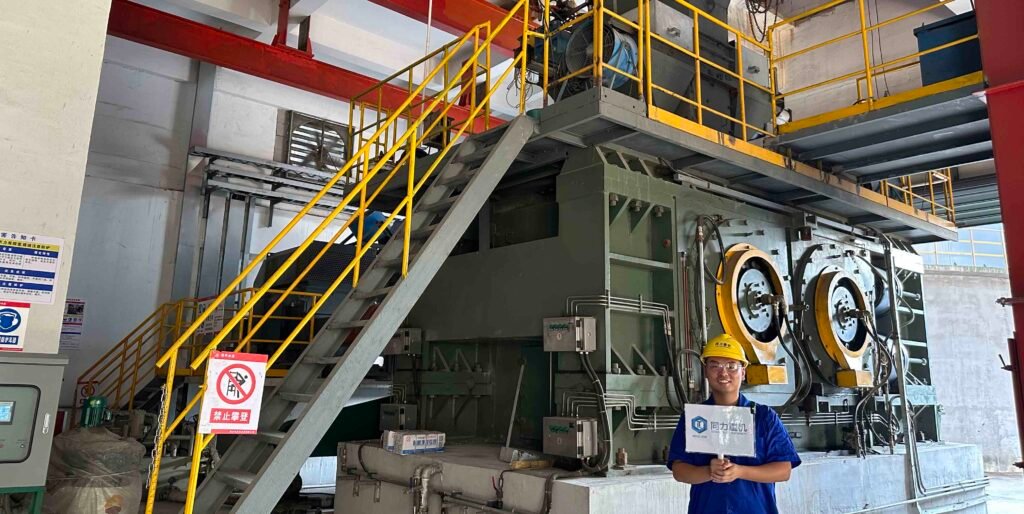
The two process systems targeted for this benchmarking are the cement vertical mill final grinding system ZJTL-5640 and the roller press semi-final grinding system (TL180-160+φ3.8×14.5m). The benchmarking analysis only compares the projects with higher operation and maintenance costs, mainly including operation costs (labor costs, electricity costs) and maintenance costs (repair costs, spare parts replacement costs and lubricant costs).
1. Labor Costs
Cement Vertical Mill Final Grinding System labor cost:
- Central Control Shift Leader: 1 person per shift, annual post - tax income of $10,416.67 (75,000 RMB ÷ 7.2), 4 shifts per year, total annual cost of $41,666.68.
- Central Control Operator: 1 person per shift, annual post - tax income of $25,000 (180,000 RMB ÷ 7.2), 4 shifts per year, total annual cost of $100,000.
- Field Engineer: 1 person per shift, annual post - tax income of $27,777.78 (200,000 RMB ÷ 7.2), 1 shift per year, total annual cost of $27,777.78.
- Field Patrol Inspector: 2 people per shift, annual post - tax income of $15,000 (108,000 RMB ÷ 7.2), 4 shifts per year, total annual cost of $120,000.
Total annual cost for this system: $289,444.44 (2,084,000 RMB ÷ 7.2), with 5 people per shift.
Combined Grinding System with Roller Press + Ball Mill system labor cost:
- Central Control Shift Leader: 1 person per shift, annual post - tax income of $10,416.67 (75,000 RMB ÷ 7.2), 4 shifts per year, total annual cost of $41,666.68.
- Central Control Operator: 1 person per shift, annual post - tax income of $25,000 (180,000 RMB ÷ 7.2), 4 shifts per year, total annual cost of $100,000.
- Field Engineer: 3 people per shift, annual post - tax income of $27,777.78 (200,000 RMB ÷ 7.2), 1 shift per year, total annual cost of $83,333.34.
- Field Patrol Inspector: 2 people per shift, annual post - tax income of $15,000 (108,000 RMB ÷ 7.2), 4 shifts per year, total annual cost of $120,000.
Total annual cost for this system: $345,000 (2,484,000 RMB ÷ 7.2), with 7 people per shift.
Labor cost conclusion:
The cement vertical mill final grinding system has 2 fewer people per shift than the combined grinding system. Its labor cost is 83.9% of the combined system’s ($289,444.44 ÷ $345,000 ≈ 83.9%), saving $55,555.56 in labor costs annually ($345,000 - $289,444.44).
2. Electricity cost comparison:
Remark: The power consumption per ton of the cement vertical mill semi - final grinding system is 23.96 kWh/t, and that of the roller press semi - final grinding system is 26.9 kWh/t. The working system is calculated as 310 days per year and 20 hours of operation per day.
Cement Vertical Mill Final Grinding System Electricity cost:
- Annual electricity consumption of the cement vertical mill final grinding system:
The electricity consumption is 250/h × 20h × 310 days × 23.96 kWh/t = 37145000 kWh (29.7104 million kWh). With an electricity price of 0.55 RMB/kWh, the annual electricity cost is $2579513.89. The unit electricity cost is 23.96 kWh/t × 0.55 RMB/kWh =$1.83/ton.
Roller Press Final Grinding System Electricity cost:
- Annual electricity consumption of the semi - final grinding system:
The electricity consumption is 250/h × 20h × 310 days × 26.9 kWh/t = 41897500 kWh (33.3565 million kWh). With an electricity price of 0.55 RMB/kWh, the annual electricity cost is $2916493.06. The unit electricity cost is 26.9 kWh/t × 0.55 RMB/kWh = $2.06/ton
Electric cost conclusion:
The cement vertical mill final grinding system can save 4752500 kWh of electricity annually compared to the roller press semi - final grinding system, and the annual electricity cost savings amount to $337006.94.
3. Annual Maintenance Cost Comparison:
Maintenance & Repair Costs of Cement Vertical Mill Final Grinding System
1. Vertical Mill
- Off - line Surfacing Welding (for components like rollers, discs, etc.): Annual total cost: $115,138.89
- Lubricants (oils, greases for rollers, reducers, etc.): Annual total cost: $3,125 Sub - total for vertical mill: $118,263
2. Dust Collector bag filter
Filter bags (specs: Φ133mm×6000mm, acrylic coated): Annual total cost: $736.11
3. Exhaust Fan
- Lubricating oil (brand 4407 - 220): Annual total cost: $16.67
4. Conclusion:
Total maintenance & repair cost of the vertical mill final grinding system: $119,016.67
Maintenance & Repair Costs of HPGR High Pressure Grinding Roller + Ball Mill Grinding System
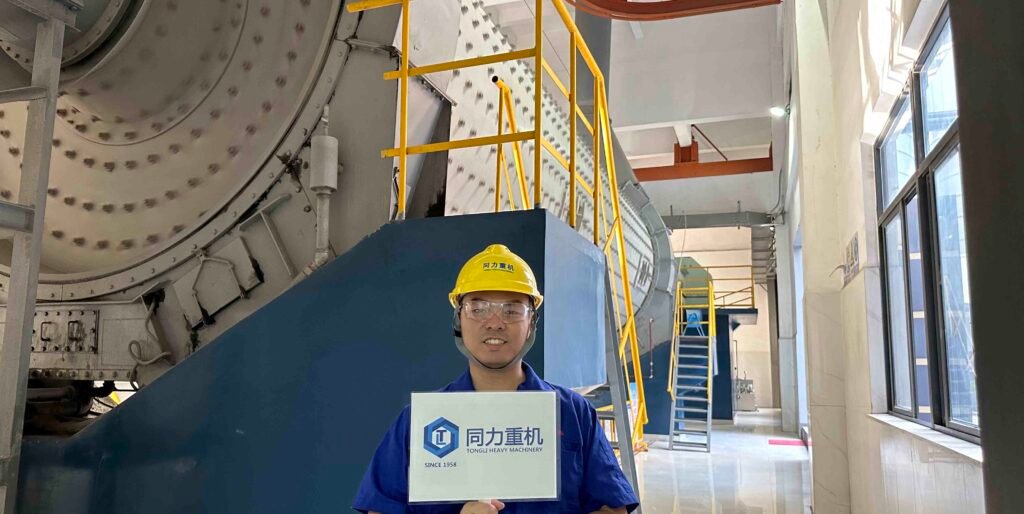
1. Roller Press
- Major Overhaul/Off - line Surfacing (for roller sleeves, bearings, etc.): Annual total cost: $15,277.78
- Lubricants (greases, oils for lubrication, hydraulic systems): Annual total cost: $2,175
2. Bucket elevator
- Wear - and - tear Parts (chains): Annual cost: $1,979.17
- Hopper: Annual cost: $273.61
3. V - type Separator
Guide Vanes (repair): Annual total cost: $277.78
4. Circulation Fan
- Wear - Resistant Surfacing (Fan Blades): Annual total cost: $416.67
- Lubricating Oil (4407 - 220): Annual total cost: $83.33
5. Bag house filter
Filter bags (specs: Φ132mm×2450mm, high - temp & water - oil - resistant coated): Annual total cost: $145.83
6. Cement Ball Mill
Wear-resistance parts:
- Mill Head Guard: Annual cost: $231.94
- 1st Chamber Liner (1): Annual cost: $694.44
- 1st Chamber Liner (2): Annual cost: $972.22
- Diaphragm: Annual cost: $694.44
- Mill Tail Grate Plate: Annual cost: $138.89
- Seal: Annual cost: $138.89
- Grinding Media: Annual cost: $2,083.33
- Reducer Maintenance: Annual cost: $520.83
Ball mill annual Lubrication consumption cost:
- Huacheng - Lubricating Oil (4407 - 220): Annual cost: $129.17
- Main Motor - Turbine Oil (L - TSA46): Annual cost: $152.78
- Main Reducer - Lubricating Oil (4407 - 320): Annual cost: $402.78
7. Mill Tail Dust Collector
- Filter bag specs: Diameter 132mm, length 3060mm; material is high - temperature - resistant, water - and - oil - repellent coated film.
- Annual replacement quantity: 100 pieces; filter bag unit price: 25.7 RMB; annual total cost: $35.69
8. Mill Tail Bucket Elevator
- Wear - and - tear parts (chain): Replacement cycle 8 years, cost 450,000 RMB; maintenance frequency 1 time/year, cost per maintenance 20,000 RMB.
- Annual total cost: $1,059.03
9. O - Sepa Separator
- Replacement & Maintenance: For ceramic plates, reducers, and oil seals replacement; maintenance frequency 1 time/year, cost per maintenance 50,000 RMB. Annual total cost for replacement and maintenance: $694.44
- Lubricating Oil (4407 - 220): Filling frequency 5 times/year, quantity per filling 170kg, cost per filling 5,100 RMB. Annual total cost: $141.67
10 . O - Sepa Dust Collector
- Filter bag specs: Diameter 132mm, length 3060mm; material is high - temperature - resistant, water - and - oil - repellent coated film.
- Annual replacement quantity: 100 pieces; filter bag unit price: 25.7 RMB; annual total cost: $35.69
Conclusion:
The maintenance and repair cost of the roller press combined grinding system is $285,714 USD.
Comparison of operation and maintenance costs of two grinding systems table:
| Grinding System Type | Operating Costs - Labor Cost (USD ten thousand) | Operating Costs - Electricity Cost (USD ten thousand) | Maintenance & Repair Cost (USD ten thousand) | Total (USD ten thousand) | Unit Cement Cost (USD/ton of cement) |
| Vertical Mill Final Grinding System | 29.77 | 233.44 | 12.24 | 275.45 | 1.10 |
| Semi - final Grinding System | 35.49 | 262.08 | 28.59 | 326.16 | 1.30 |
| Proportion (Vertical Mill/Semi - final Grinding) | 83.90% | 89.07% | 42.82% | 84.45% | 84.45% |
From the table above we can conclude the following points:
- Labor cost: cement vertical mill final grinding accounts for 83.9% of the semi-final grinding system;
- Electricity cost: cement vertical mill final grinding accounts for 89.07% of the semi-final grinding system;
- Maintenance and repair cost: cement vertical mill final grinding accounts for 42.82% of the semi-final grinding system;
- Total operation and maintenance cost: cement vertical mill final grinding accounts for 84.45% of the semi-final grinding system;
Technical parameter comparison table:

| Item | Vertical Roller Mill Grinding System | Semi - final Combined Grinding (Closed Circuit) |
| Cement Grade | P·O42.5 | P·O42.5 |
| Specific Surface Area, cm²/g | 3500 | 3500 |
| System Output, t/h | 250 | 250 |
| Main Equipment Configuration | JLMS1 - 56.3 | JGY1816 + φ3.8×14.5m |
| Process Flow | Simple | Complex |
| Grinding Principle | Roller: Compression + Grinding Disc: Attrition | Roller Press: Extrusion + Ball Mill: Impact and Friction |
| Over - grinding Phenomenon | None (Immediate Grinding and Selection) | Less |
| Cement Product Temperature, °C | 70 - 85 | 90 - 110 |
| Adaptability | Strong adaptability. The vertical mill has the functions of crushing, grinding, drying, mixing, and shaping, and has strong adaptability to materials. It is especially suitable for materials with high moisture content and strong abrasiveness. | Poor adaptability |
| Production Efficiency - Efficiency | High production efficiency, bed - material grinding, immediate grinding and selection, short residence time (2 - 3 minutes), no over - grinding, stable and controllable cement temperature | General production efficiency, long material residence time (15 - 20 minutes), prone to over - grinding, high cement temperature |
| Production Efficiency - Equipment Reliability | Mature and reliable | Mature and reliable |
| Production Efficiency - Wear - resistant Parts Service Life | 15000 | 8000 (Surfacing Roller) |
| Energy Conservation and Environmental Protection - Unit Installed Power, kWh/t | ~38.5 | ~40 |
| Energy Conservation and Environmental Protection - Power Consumption, kWh/t | 20 - 25 | 25 - 28 |
| Energy Conservation and Environmental Protection - Dust | Simple process, few equipment, less transfer and transportation. Less unorganized emission, clean operating environment | Complex process, more equipment, more transfer and transportation. Relatively more dust emission |
| Energy Conservation and Environmental Protection - Noise, dB (A) | 70 - 95 | 95 - 120 |
| Operational Convenience - Automation Degree | Simple process, few equipment, easier to realize the unmanned operation function of the intelligent expert control system | Complex process, numerous equipment, many control points, difficult to realize unmanned operation function |
| Operational Convenience - Cement Type Switching, minutes | 15 - 20 | 45 - 60 |
| Operational Stability - Material Drying Capacity | The vertical mill has the functions of mixing, stirring, and drying, and can dry 8% moisture | Poor drying capacity, can dry 2% moisture |
| Operational Stability - Cold Start Operation | Can operate in cold start | Can operate in cold start |
| Operational Stability - High Operation Rate | Simple process, few equipment, few failure points. Operation rate up to 95% or more | Complex process, numerous equipment, many failure points. Operation rate around 80% |
| Operational Stability - Ball Loading Rate | / | ~30% |
| Operational Stability - Low Wear | 5g/t (Roller + Grinding Disc) | 28g/t (Roller Press Roller Surface + Ball Mill Steel Balls) |
| Maintenance - Maintenance Convenience | Convenient maintenance. The roller can be rolled out of the mill for repair; low maintenance frequency, convenient start - stop | Complex maintenance. Narrow internal maintenance space in the workshop; many equipment failure points, high maintenance frequency |
| Maintenance - Requirements for Operation | Simple | Complex |
| Maintenance - Maintenance Cost | Low maintenance cost, equivalent to 42.82% of the roller press semi - final grinding system | High maintenance cost |
| Cost - Labor Cost | Low labor cost, equivalent to 83.9% of the roller press semi - final grinding system | High labor cost |
| Cost - Electricity Cost | Low production electricity cost, equivalent to 89.07% of the roller press semi - final grinding system | High production electricity cost |
| Cost - Equipment Investment | Low equipment investment, equivalent to 89.9% of the roller press semi - final grinding system | High equipment investment |
| Cost - Installation Engineering Cost | Low installation engineering cost, equivalent to 86.7% of the roller press semi - final grinding system | High installation engineering cost |
| Cost - Construction Engineering Cost | Low construction engineering cost, equivalent to 78.5% of the roller press semi - final grinding system | High construction engineering cost |
| Cost - Construction Period | Short construction period, can be shortened by about one month compared to the roller press semi - final grinding system | Long construction period |
| Cement Product Performance - Cement Quality | Stable | Unstable, prone to fluctuation |
| Cement Product Performance - Particle Shape and Distribution | Uniform and reasonable distribution, more content in the 3 - 32μm particle size range, conducive to later strength growth | Reasonable |
| Cement Product Performance - Standard Consistency Water Requirement | Less, 25 - 27% | More, 26 - 28% |
| Cement Product Performance - Net Paste Fluidity | Good | Good |
| Cement Product Performance - Cement Strength | Good | Good |
Conlcusion: VRM and Roller Press for Cement Grinding Which one I should Choose?
The cement vertical mill equipment, which integrates crushing, grinding, drying, mixing, powder selection and shaping, has many advantages, such as advanced material bed grinding principle, simple process system, low power consumption, good material adaptability, high production efficiency, energy saving and environmental protection, convenient operation, compact space layout, low production and construction cost and short cycle, low operation and maintenance cost, superior cement product performance, stable quality and convenient operation, etc. It is an ideal grinding equipment for achieving high efficiency, energy saving and green environmental protection.
With the improvement of vertical mill design and manufacturing technology, continuous innovation of grinding process, and improvement of operation level (no water spray, cold grinding operation has been mature), vertical mill as cement final grinding equipment has been welcomed by the majority of end users. The final grinding of cement vertical mill can adapt to the requirements of large-scale production, and has many advantages such as simple production process system, energy saving, environmental protection (less dust, low noise), stable cement product quality, convenient operation and less manpower investment.

